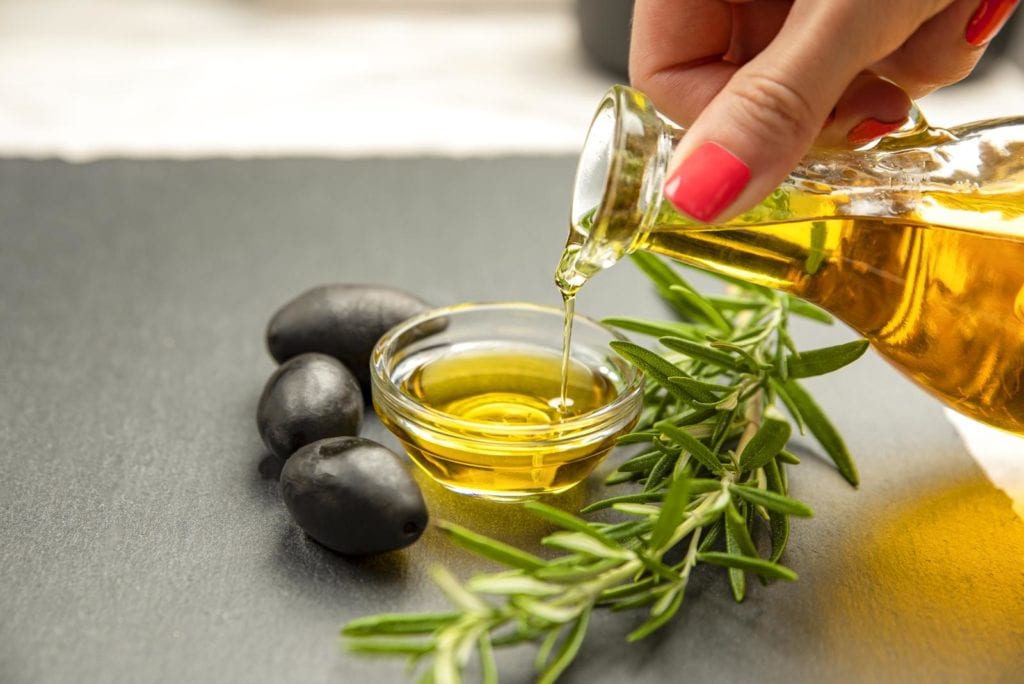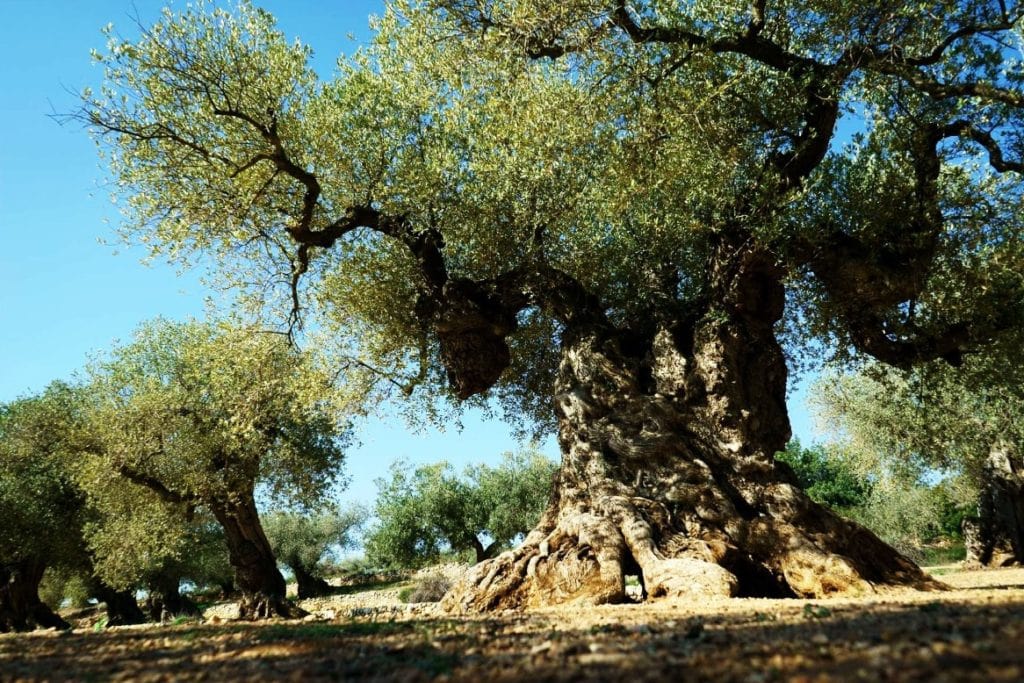Olive Oil History
Updated 9th May 2022

Summary
- Olive oil is one of the oldest foods in the world. It’s a staple in The Mediterranean Diet, but it’s enjoyed by people all over the globe.
- What makes extra virgin olive oil so special? And where did it come from? Let’s take a look at the history of this ancient food.
Contents
Olive oil has been around for centuries, and its origins are fascinating but was the humble olive originally used for something other than olive oil for consumption? Fossil evidence indicates the olive tree had its origins some 20-40 million years ago in the Oligocene era. Evidence of the first olive cultivation has been found on the border between Turkey and Syria, in the period around 6000-8000 years ago. A recent DNA study of fossilized pollen has helped to narrow it down to this period.

The Origins Of Olive Oil
For thousands of years olive oil main function was for lighting lamps rather than culinary use. Edible olives seem to date back to around the Bronze age (3150 to 1200 BCE). Over the ages the cultivation of olives and olive oil pressing managed to decrease the bitterness in olives and olive oil, also increase production.
Inventory logs carried by ancient trading ships dating back to around 4,000 BCE contain the first written records of olive oil, which was transported through the Mediterranean area from one port to another.
Students of Olive Oil history can show that as far back as 3000 BC, olives were grown commercially in Crete and olive oil may well have been the source of the wealth of the Minoan civilization. An olive tree near the Palace of Knossos on Crete is reputed to be around 4,000 years old.
The first great expansion of olive cultivation seems to be around Greece and Egypt around 1,700 BCE.
Around 1,000 BCE the Phoenicians are thought to have brought olives to Spain and Northern Africa.
The expansion of the Roman Empire in around 900 BCE was key to olive oil and its uses. The Roman Empire expanded its civilization throughout southern Europe and North Africa, bringing with it olive trees to all conquered territories. As an important commodity, the Romans made many improvements in olive tree cultivation, olive oil extraction and storage – and valued olive oil to such an extent that it was even accepted as payment for taxes. Production increased greatly and olive oil became most popular. More olive mills were built as this culinary staple became increasingly popular.
The decline of the Roman Empire in 500 A.D. brought with it a decrease in olive cultivation and a reduction in olive oil use.
Around 1,110 AD olive groves begin to flourish once again, particularly in Italy, thanks to the merchant class who discovered that selling olive oil in local markets was an important source of income. During this time, Tuscany becomes a renowned region for the cultivation of olive trees.
Olive Oil In Modern History
The continued production and use of quality olive oil in modern history points primarily to the Renaissance, where Italy becomes the largest producer of olive oil in the world, renowned for its rich and flavourful oils that graced the tables of nobles and royalty throughout Europe.
Spanish colonists brought the olive to the New World in the 16th century where its cultivation prospered in present-day Peru and Chile. Olive tree cultivation quickly spread along the valleys of South America’s dry Pacific coast where the climate was similar to the Mediterranean.
Spanish missionaries established olive trees in the 18th century in California. It was first cultivated at Mission San Diego de Alcalá in 1769 or later around 1795.
Around 1,800 AD, olive oil makes its commercial debut in the Americas as Italian and Greek immigrants demand its import from Europe.
Modern Day Uses of Olive Oil
Currently, the best olive oils continue to grow in popularity both for their health benefits and as an important ingredient in everyday cuisines. Consumption is still predominantly in Mediterranean countries with a long tradition of olive oil culture, however as more countries are becoming health conscious, olive oil is re-asserting itself as the original super-food, thanks to its proven health benefits and nutritional properties. As a result of its ongoing success, there are now more than 860 million olive trees in the world today, with more being planted every day! Each cultivar is enhanced and improved for flavour, stability and size. There are over 700 varieties across the world today.
The Best Olive Oil From Morocco
The benign climate makes Morocco a ‘Garden Of Eden’ on the doorstep of Europe and the ideal location for olive cultivation with mild winters and warm, dry summers. The soils in the main olive-growing regions are rich and deep, and generally have an equal balance of clay and coarse sands.
Even though olive cultivation has been part of Morocco’s agricultural scene since the Roman era, and Morocco is the world’s fourth largest producer of olive oil, the quality and compositional peculiarities of Moroccan olive oil have been relatively unknown.
Morocco Gold extra virgin olive oil comes from groves in the foothills of the Atlas Mountains. The specific soil conditions of the Beni Mellal region, together with the mild winters and summers, caressed by hot winds from the Sahara, make ideal growing conditions for Morocco Gold olives.
It is interesting to consider how this ancient food has been used for so many purposes over the years. The next time you’re in the grocery store, take a moment to look at the different types of olive oil on the shelf and think about which one you might like to try. Once you have a bottle of your own, be sure to cook with it and enjoy its multitude of health benefits!
